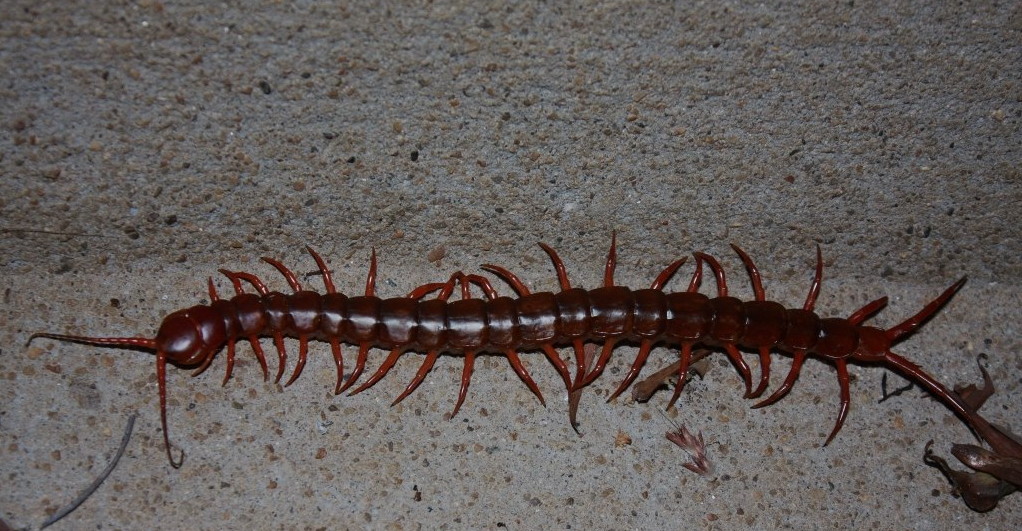You’ve no doubt seen a centipede climbing on a wall, or skittering along the ground. Most of the many-legged creatures are small, but some found in Texas are not. Wizzie Brown, an insect specialist with the Texas A&M AgriLife Extension Service, says the giant centipedes, called Texas red-headed centipedes, can reach nine inches when fully grown.
On how centipedes get stuck in bathtubs and showers:
A lot of times when it’s hot and dry outside, or it’s cold outside, or not the perfect environmental conditions, they will move inside, either looking for water or looking for shelter. And if they’re looking for water, a lot of times that leads them to the bathtub [or] shower area, and they’ll get down in there and they can’t climb back up the smooth sides, and so they get stuck.
On the benefits of giant centipedes:
They are predators, so they are beneficial, as long as they are outside and they’re eating the bugs that are out there.
On how to recognize a giant centipede:
The ones that we have around here are going to have kind of a bluish-black body, or sometimes a more greenish-black [body]. They’re going to have an orangish-red head, and they’re going to have bright-yellow legs. So they’re very, very pretty – kind of creepy-looking, though.
On what creeps out the bug expert:
These [giant centipedes] creep me out, and ticks creep me out.
On the dangers of giant centipedes:
Normal-sized centipedes, while they can bite you, it’s really not going to do anything. But these larger ones that we have can have a very painful bite … and to call it a bite is kind of a misnomer because it’s not actually fangs that they’re using; they actually have a modified pair of legs that are behind the head that they use to inject venom.
On what to do with centipedes in the home:
If they move indoors, just get a dustpan and a broom and sweep them up and chuck them back outside.

















